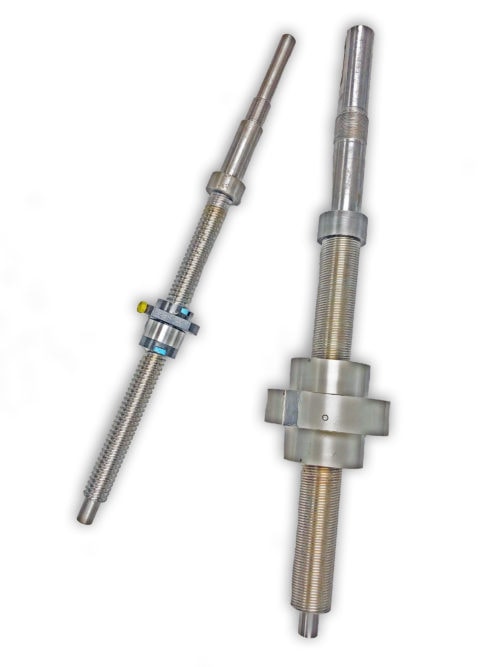
Actuators are mechanical devices that convert energy into motion. These components are incorporated into a wide variety of products, from industrial equipment to household electronics. The energy source of an actuator can be electric, hydraulic, or pneumatic power.
High-quality, heavy-duty actuators are critical for industrial operations, where they are responsible for facilitating linear and rotary motion to convey materials and operate equipment. For heavy-duty operations, ball screw actuators and roller screw actuators are ideal. We will explain the characteristics, benefits, and differences between ball screw and roller screw actuators so you can choose the one that best suits your needs.
Ball Screw Actuators
Ball screw actuators convert rotary motion to linear motion. They feature a nut mounted on a grooved screw shaft. Inside the nut, recirculating balls roll within the groves of the screw shaft. As the screw turns, the nut moves up and down the shaft along the grooves, creating linear motion that can be finely controlled by turning the screw. Ball screw actuators provide precise control for medium-duty to heavy load-bearing applications and can accommodate high-speed processes.
Ball Screw Applications
Ball screw actuators provide smooth, energy-efficient motion with exceptional accuracy and precision control. They offer continuous high-speed, high-force movement for long periods of time. These benefits make ball screws ideal for:
- Sawmills
- Wind turbines
- Solar panels
- Vehicle power steering
- Assembly equipment
Roller Screw Actuators
Roller screws have a similar construction to ball screws, but instead of recirculating balls, they contain rollers that are threaded to match the threads on the main screw shaft. Since the rollers do not touch each other, they do not interfere with each other’s motion and can operate significantly faster than ball screws. The individual rollers have greater surface area contact with the main shaft than recirculating balls, so they have higher axial load characteristics, higher dynamic load capabilities and thus longer life than comparable ball screws. They also generate more heat and require more lubrication at tighter intervals.
Roller Screw Applications
Roller screws can withstand high force and repetitive motions for long periods of time. They can be controlled with a high degree of precision, and their extensive surface area provides additional stress dispersion in high-force applications, such as:
- Automotive and aerospace manufacturing
- Metal casting and molding
- Paint spraying
- Pressing, inserting, and riveting
- Precision CNC machining
- Automated, high-speed manufacturing equipment
Which Actuator Is Right for You?
Ball and roller screws each offer unique advantages for different applications. To determine which actuator is ideal for your needs, consider the following:
- Operational Life: In general, roller screws have a longer service life and offer good ROI when operated for extended periods of time. For projects lasting less than three years, ball screws are highly effective and make an excellent investment. Depending on the budget and length of your project, ball screws may be ideal for short-term, low-budget projects, while roller screws would be better for long-term applications.
- Expected Force: Longevity is greatly affected by the amount of force exerted. Roller screws are better than ball screws for heavy loads over eight tons. For applications with lower load capacity, balls screws represent an excellent low-cost option.
- Maintenance Frequency: Due to the amount of friction and heat they generate, roller screws often require more lubricant and maintenance than ball screws, especially in high-speed operations. Both types of actuators operate best with sufficient lubrication and regular preventative maintenance.
- Contact Area: Due to the lack of contact between rollers and the bearing, roller screws transmit more force more quickly. Ball screws must make contact between balls and the bearing, so this can interfere with ball motion, reducing efficiency and increasing wear on the actuator elements.
- Cost: Ball screw actuators are significantly less expensive to obtain, maintain, and repair. Components are readily available open-market, and their simple design makes them easy to fix. Roller screws, on the other hand, are more complex and contain more specialized components, which makes parts harder to source and more expensive to repair or replace.
Request a Quote on Quality Actuators from HyperCyl
HyperCyl is a leading developer and manufacturer of cutting-edge assembly and forming technology. We offer a selection of ball screw, roller screw, and other actuator designs to meet the needs of demanding applications in the commercial, manufacturing, defense, and automation industries. To learn more about our innovative motion solutions, contact us today or request a quote!

Comments are closed